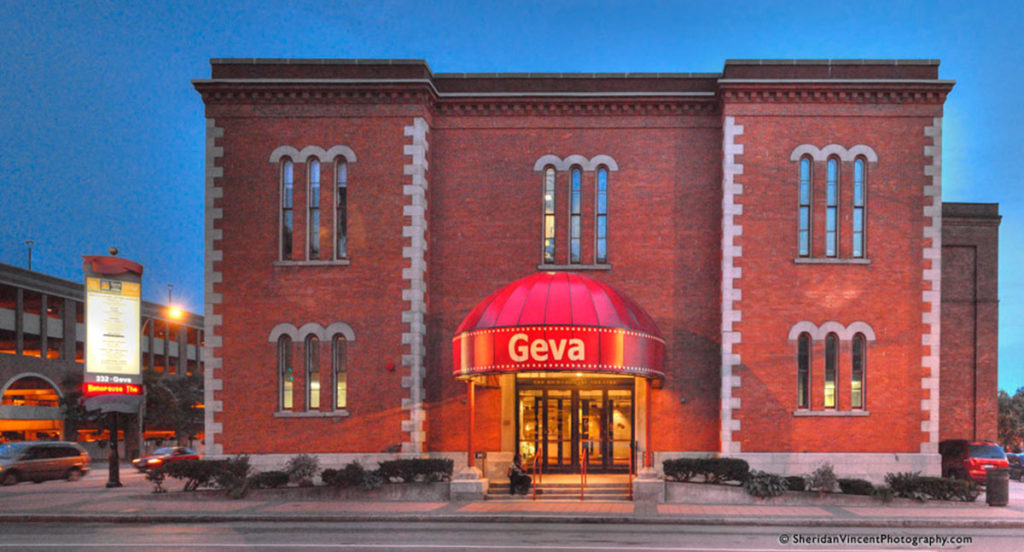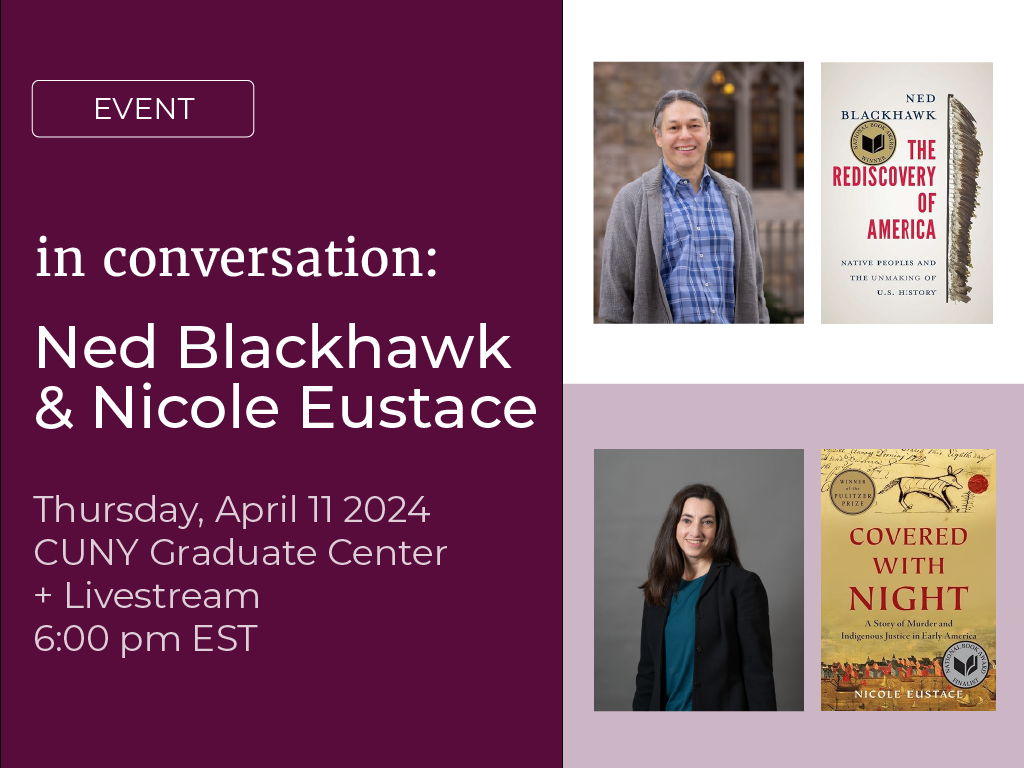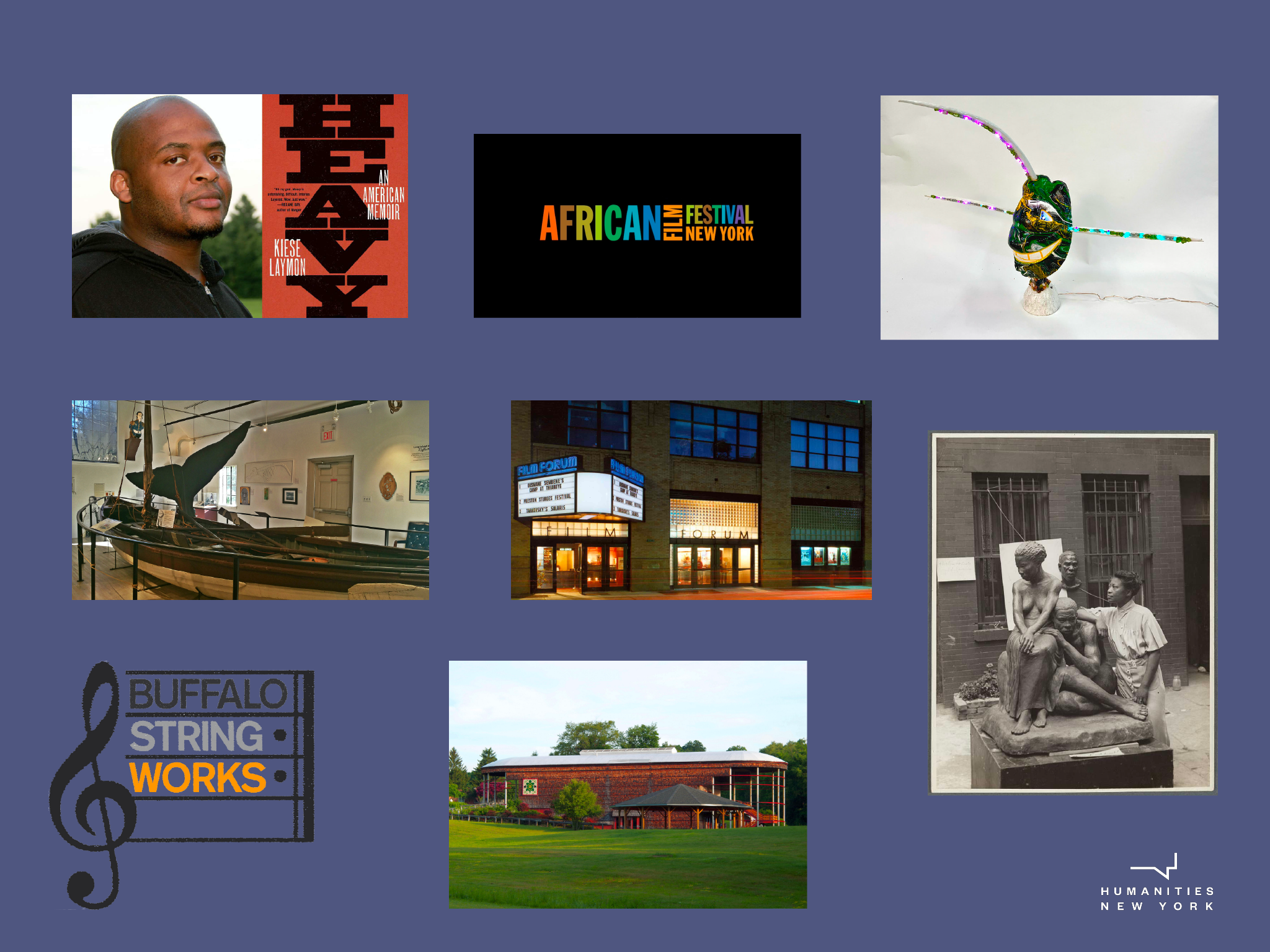In July, Humanities New York Grant Officer, Kate Sidley, spoke with Jenni Werner and Mary Tiballi-Hoffman of the Geva Theatre Center in Rochester about their funded grant project, “Journey to the Son: A Celebration of Son House”—a four day celebration honoring legendary blues musician Eddie “Son” House. Geva Theatre Center received an Action grant in support of this project.
So, tell me a little bit about the process of applying for this grant. Who came up with the idea? How do you work together when applying for a grant?
MTH: Well, this project is a kind of a special, one-time-only, large-scale event that we’re doing apart from our normal program activities. To start, the development team sat down with our artistic team (Jenni and Skip) and asked them a thousand questions about what they were planning…
JW: And some of the things that you guys asked us at that time we didn’t necessarily have answers for.
MTH: Right.
JW: So some of that collaboration comes from us talking to each other and you asking us questions to clarify what we’re going for.
MTH: Yeah, those conversations have been really great in terms of giving our team focus and brainstorming some of the ancillary details to fill out a well-rounded experience for our audiences. So we had a huge meeting back in December to lay the groundwork for our fundraising team in terms of what the festival would look like. There’s a million moving parts to this project because of the nature of the activities. It’s multidisciplinary. We sat down for about an hour and a half with Jenni and Skip and really picked their brains. That gave us all the information we needed to create a good foundation for writing grants in support of this festival.
You mentioned the scale of this project and the fact that you are collaborating with a lot of different artists, scholars, and organizations. How has that experience been?
JW: Well the genesis of this idea actually came from a party in Skip’s backyard. They had invited a bunch of blues musicians to come and play and three of the musicians knew Son House, who had lived here in Rochester for about 30 years. That sparked this idea that Son House was a legendary blues musician who people in Rochester don’t necessarily know. That was about five years ago. I got here four years ago, at Geva, and it was the very first project that anybody here talked to me about. We started to think about how we could do something but we didn’t know what it was going to be. And then an incredible local foundation, the Max and Marian Farash Foundation, announced a call for proposals for, what was it called Mary? The Creative Collision?
MTH: Creative Collision, yes.
JW: The whole purpose of that was to join non-profits, for-profits – different kinds of organizations with different missions – to work together to accomplish something that they could not do alone. That seemed like a perfect opportunity to do something really was fitting of the size of legacy of this musician. We applied for that and found partners like the Eastman School of Music, the George Eastman House, the House of Guitars, and various departments within the University of Rochester.
All of these different organizations wanted to do something in celebration of Son House’s legacy. We wanted to commission a play about his life, but we knew that that wasn’t big enough. We needed to find a way to put that play in context for our community. How do we help people really understand who Son House was, where he came from, and what future of his legacy? That became the spark for this four day festival that is a mixture of blues musicians playing music, talking about his legacy, the importance of Son being here in Rochester, his life in Mississippi, and so on. The festival will bring academics from all over the country. It will involve music lessons, guitar workshops, and harmonica workshops.
When we first started researching this, Skip and I went to Mississippi and met Dick Waterman who was one of the three men who found Son here in 1965. Son had had a successful career in Mississippi in the 1930s and 40s and then quit playing and moved to Rochester. He worked a lot of odd jobs but he wasn’t playing music until the 1960s when these three record collectors decided they wanted to find him. They re-launched his career. Dick Waterman became his manager for the next ten years.
Skip and I met Dick and we were amazed to discover that he is – in addition to having been a manager for Son House and all kinds of other fantastic musicians –an incredible photographer. The photographs that are just in his house are breathtaking. He has agreed to send us 13 of his photographs on loan from the Delta Blues Museum which we’ll be displaying in our lobby. I’m really excited how that will bring the visual art element into this exploration of Son House’s life.
It sounds like this project has grown and expanded organically as you’ve been working on it.
JW: [laughter] It sure has!
Is there a point where you think, “that’s enough” and you don’t expand anymore?
JW: The nature of a theatre artist is always to say yes. So the time when we say, “that’s enough” will probably be the end of the festival.
What we’re discovering as we talk about this more and speak with people who knew Son House or had some connection with him is that a lot of people in this community feel a sense of ownership of him. If they met him, they feel like they should have some control over how his story is told. There are tons of blues musicians who, as soon we announced this was happening, immediately started calling us to find out how they could participate.
This is really an event that celebrates Rochester’s place in blues history. We’ve been working hard to incorporate as many ideas as we can. We’re always saying “yes” and trying to find ways to fit it all in. We certainly don’t want to be at a point where we say, “no, we can’t do that.” The intent is really to open our doors wide and welcome our community in which we can’t do if we say, “no.”
Something that stood out to our review committee was how open and welcoming this project seems. As a grant writer, how did you approach explaining this festival in the narrative? I looked at the application earlier today and noticed at some points it’s called a festival, at some points a celebration, and at some points a symposium. It’s really all those things. How do you encapsulate something so big in 300 words or however much you have?
MTH: It’s challenging! Probably the most challenging part for me of the application process is editing everything down. The entire 300 words is really the entire hour and a half long conversation with Jenni and Skip boiled down to its most concise statements. We branded this “A Celebration of Son House” because we felt the word “celebration” covered all the bases. You could call it a festival, or a symposium, which has a more scholarly tone to it and is a word we used a lot for our NEH proposal. Even though these words are almost synonyms of each other each has its own connotation to whatever audience you’re putting it in front of.
Jenni was talking about how we don’t want to say, “no” to anyone. We really want this sense of ownership to resonate with our community. This isn’t just Son House’s story, it’s Rochester’s story. As a grant writer, that’s challenging because anytime you check in something new is being added. It was tough boiling it all down, but this has been a huge conversation within our organization for the past couple of years.
JW: I think some of why those words have shifted also is that it really is all of those things. There are “talky” events where we’re discussing the context of Son House’s life than you wouldn’t normally find at a festival. There are also more music events than you would normally find at a conference or symposium. It’s hard to define because this project lives in a world unto itself.
What would you say – and I think you’ve already started to touch on this a little bit – what would you say the role of the humanities in this sort of event is? What made you consider this a humanities event?
JW: I think because it is so much about community and the context of what we’re doing. We wanted to commission a play about this man’s life. Everything this festival is doing is about exploring context and backing up that play to help us understand points of view that we may not have considered before. The conversations happening go along with and help us understand the art.
How do we understand the music if we don’t know where the blues came from or what was happening in Mississippi when this style of blues was created? This is an important humanities conversation.
I realize this may be a tough question because you’re in the middle of it right now, but is there anything you’ve learned that you could take away for future projects or the next enormous blues festival you do?
JW: [laughter] Right! Well, I have to say I’ve learned such a huge amount. The festival as a whole has helped us figure out how to think together as an organization. We’re all finding different ways of working together institutionally. This project is also bringing us into much closer relationships with different portions of our community here in Rochester and I’m hoping that the connections we’ve made will continue to strengthen and grow. I don’t know that we’ll necessarily do another blues festival! But, I certainly hope that we continue to move forward with these relationships we’ve built.
We’re approaching the end so I’ll pose one last question to both of you: what advice would you give to a first time grant writer or to someone who is working with a grant writer?
JW: I’ll let Mary start!
MTH: [laughter] I’d say your project team is your most valuable resource. You really need to have a collaborative approach with them. You have to know about the project. You have to do the research. You have to constantly be in conversation because as the grant writer you are tasked with being the cheerleader and advocate for that project. You have to be able to talk about the programming, vision, timeline, budget, and all the different elements. You have to be connected to the people who are having those conversations, making those decisions, and dreaming those dreams. That is going to be the smartest thing you can do.
JW: Collaboration is the most important thing in any art form. I would venture to say that in most organizations, the ones that are really successful are the ones who can collaborate. Some of the grant proposals we’ve worked on for this project asked questions that have allowed us to think deeper and bigger. Some of that comes when you sit down in a room together and work on something as a team. I’m sure some of the things in this festival wouldn’t be here if Skip and Mary and I hadn’t sat down and really worked through some of these things. Value your partners because collaboration is the most important thing.



